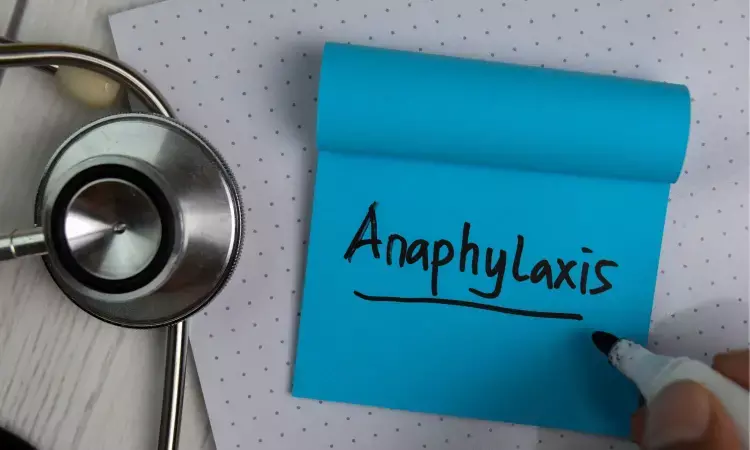- Home
- Medical news & Guidelines
- Anesthesiology
- Cardiology and CTVS
- Critical Care
- Dentistry
- Dermatology
- Diabetes and Endocrinology
- ENT
- Gastroenterology
- Medicine
- Nephrology
- Neurology
- Obstretics-Gynaecology
- Oncology
- Ophthalmology
- Orthopaedics
- Pediatrics-Neonatology
- Psychiatry
- Pulmonology
- Radiology
- Surgery
- Urology
- Laboratory Medicine
- Diet
- Nursing
- Paramedical
- Physiotherapy
- Health news
- Fact Check
- Bone Health Fact Check
- Brain Health Fact Check
- Cancer Related Fact Check
- Child Care Fact Check
- Dental and oral health fact check
- Diabetes and metabolic health fact check
- Diet and Nutrition Fact Check
- Eye and ENT Care Fact Check
- Fitness fact check
- Gut health fact check
- Heart health fact check
- Kidney health fact check
- Medical education fact check
- Men's health fact check
- Respiratory fact check
- Skin and hair care fact check
- Vaccine and Immunization fact check
- Women's health fact check
- AYUSH
- State News
- Andaman and Nicobar Islands
- Andhra Pradesh
- Arunachal Pradesh
- Assam
- Bihar
- Chandigarh
- Chattisgarh
- Dadra and Nagar Haveli
- Daman and Diu
- Delhi
- Goa
- Gujarat
- Haryana
- Himachal Pradesh
- Jammu & Kashmir
- Jharkhand
- Karnataka
- Kerala
- Ladakh
- Lakshadweep
- Madhya Pradesh
- Maharashtra
- Manipur
- Meghalaya
- Mizoram
- Nagaland
- Odisha
- Puducherry
- Punjab
- Rajasthan
- Sikkim
- Tamil Nadu
- Telangana
- Tripura
- Uttar Pradesh
- Uttrakhand
- West Bengal
- Medical Education
- Industry
Epinephrine nasal spray potential and additional option for treating type 1 anaphylaxis

Epinephrine is used for treating severe allergic reactions, including anaphylaxis. Several epinephrine injection products are approved, but differences in their pharmacokinetic (PK) and pharmacodynamic (PD) profiles have been reported. Despite this, all approved products are considered efficacious. Epinephrine auto-injectors (EAIs) are safe and effective but inconvenient and cumbersome in a recent study published in The Journal of Allergy and Clinical Immunology. Thomas B. Casale and colleagues have said that neffy's needle-free IN administration is anticipated to offer a safe and effective means of delivering epinephrine, which would benefit patients who are hesitant and delay to take the dosing due to needle phobia.
Neffy 2.0 mg was formulated to have a PK profile within the range of currently approved epinephrine injection products. EpiPen has the fastest and highest Cmax, and manual IM injection has the slowest and lowest Cmax. Both these comparators were included in this study. The study results showed that the PD profile of neffy is comparable to EpiPen and comparable to or better than Epinephrine IM injection, indicating that neffy may be at least as efficacious as these approved products.
Epinephrine is the first-line treatment for managing severe allergic reactions, which is associated with lower hospitalization and death rates. However, current treatment options, such as epinephrine auto-injectors and manual intramuscular injections, are often considered inconvenient and challenging to use, even during severe reactions. To address this issue, an intranasal epinephrine delivery device called neffy has been developed as an alternative option.
This study assessed the comparative PK and PD of neffy 2.0 mg, EpiPen 0.3 mg, and manual intramuscular injection 0.3 mg. This study was a phase 1, randomized, 6-treatment, 6-period, 2-part crossover study conducted in 59 healthy subjects. PK and PD parameters were assessed before dosing and at various postdose intervals.
The mean maximum plasma concentrations with single doses of epinephrine for manual injection, neffy and EpiPen were 339 pg/ml, 481 pg/ml and 753 pg/ml, respectively. When dosed both once and twice, neffy had a more pronounced increase in pharmacodynamic parameters relative to EpiPen or manual injection.
They said that neffy's pharmacokinetic profile was bracketed by approved injection products, with PD responses comparable to or better than approved injection products.
They mentioned, "neffy is expected to be both a safe and effective option for those who are reluctant to carry and use injection devices."
This study was conducted in healthy volunteers, and this was the major limitation of this study. It is essential to evaluate epinephrine efficacy based on the available data with healthy volunteers and subjects with local allergic reactions, as well as with preclinical data and vast clinical experience.
Reference:
Casale, Thomas B., et al. “Pharmacokinetics/Pharmacodynamics of Epinephrine After Single and Repeat Administration of Neffy, EpiPen, and Manual Intramuscular Injection.” Journal of Allergy and Clinical Immunology, Elsevier BV, Aug. 2023. Crossref, https://doi.org/10.1016/j.jaci.2023.08.007.
BDS, MDS in Periodontics and Implantology
Dr. Aditi Yadav is a BDS, MDS in Periodontics and Implantology. She has a clinical experience of 5 years as a laser dental surgeon. She also has a Diploma in clinical research and pharmacovigilance and is a Certified data scientist. She is currently working as a content developer in e-health services. Dr. Yadav has a keen interest in Medical Journalism and is actively involved in Medical Research writing.
Dr Kamal Kant Kohli-MBBS, DTCD- a chest specialist with more than 30 years of practice and a flair for writing clinical articles, Dr Kamal Kant Kohli joined Medical Dialogues as a Chief Editor of Medical News. Besides writing articles, as an editor, he proofreads and verifies all the medical content published on Medical Dialogues including those coming from journals, studies,medical conferences,guidelines etc. Email: drkohli@medicaldialogues.in. Contact no. 011-43720751


